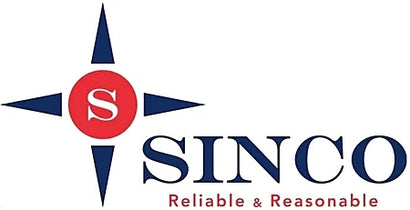In this comprehensive guide, we will walk you through everything you need to know about walk-in cooler freezers. We'll start by explaining what they are and how they work, so you can better understand their benefits. Next, we'll delve into the different types and sizes available, as well as the important features to consider when making a purchase.
We'll also provide insights on how to maximize the efficiency of your walk-in cooler freezer, from proper installation and maintenance to effective organization and storage tips. Additionally, we'll discuss safety considerations and regulations you need to be aware of.
At Sinco Food Equipment, we understand the importance of choosing the right walk-in cooler freezer for your business. That's why we've put together this guide to help you make an informed decision. So let's dive in and discover everything you need to know about walk-in cooler freezers!
- Walk-in cooler freezers come in a variety of sizes, configurations, and temperature ranges to meet the specific needs of different businesses. Understanding the different types of walk-in cooler freezers can help you make an informed decision when selecting the right one for your operations.
- One of the most common types of walk-in cooler freezers is the self-contained unit. These are all-in-one systems that include the refrigeration equipment, insulated walls, and doors, making them a convenient and easy-to-install option. Self-contained units are typically smaller in size and are ideal for businesses with limited space, such as convenience stores or small restaurants.
- Another popular type of walk-in cooler freezer is the remote system. These units have the refrigeration equipment located outside the cooler or freezer, often in a mechanical room or on the roof. Remote systems are generally larger and more energy-efficient than self-contained units, making them a suitable choice for businesses with more extensive storage needs, such as supermarkets or large commercial kitchens.
- Walk-in cooler freezers can also be classified based on their temperature range. Coolers are designed to maintain temperatures between 34°F and 40°F, while freezers are designed to maintain temperatures below 0°F. Some walk-in units are even capable of dual-temperature operation, allowing you to use the same space for both refrigeration and freezing, depending on your needs.
- Additionally, walk-in cooler freezers can be customized with various features and accessories, such as shelving, lighting, and door configurations, to optimize storage and organization within the unit. Understanding the different types of walk-in cooler freezers can help you select the one that best fits your business's unique requirements and ensures the efficient storage and preservation of your perishable goods.
- Walk-in cooler freezers offer a range of benefits that make them an essential piece of equipment for many businesses, from restaurants and catering companies to supermarkets and food processing facilities.
- One of the primary advantages of a walk-in cooler freezer is the increased storage capacity it provides. Compared to traditional refrigerators or freezers, walk-in units offer significantly more space, allowing businesses to store larger quantities of perishable goods, ingredients, and finished products. This can be particularly beneficial for businesses that need to maintain a diverse inventory or handle large volumes of food and beverages.
- Another key benefit of walk-in cooler freezers is their ability to maintain consistent, precise temperatures. These units are designed to keep temperatures within a narrow range, ensuring the proper storage and preservation of the items inside. This is crucial for businesses that handle highly perishable or temperature-sensitive goods, as it helps to extend the shelf life of their products and minimize waste.
- Walk-in cooler freezers also offer improved energy efficiency compared to smaller, less insulated refrigeration units. The thick, insulated walls and doors of these units help to minimize heat transfer, reducing the amount of energy required to maintain the desired temperature. This can lead to significant cost savings on utility bills, making walk-in cooler freezers a wise investment for businesses looking to optimize their energy consumption and operating costs.
- Additionally, walk-in cooler freezers can enhance the organization and workflow of a business's operations. By providing a dedicated, designated space for storing and accessing perishable goods, these units can help streamline inventory management, reduce the time spent searching for items, and improve the overall efficiency of food preparation and service.
- Finally, walk-in cooler freezers can contribute to the overall safety and compliance of a business's operations. These units are designed to meet strict health and safety regulations, ensuring the proper storage and handling of food items, which is essential for maintaining food quality, preventing contamination, and avoiding potential legal and reputational issues.
In conclusion, a high-quality walk-in cooler freezer is an essential investment for any business that deals with perishable goods, from restaurants and catering companies to supermarkets and food processing facilities. These versatile and efficient units offer a range of benefits, including increased storage capacity, precise temperature control, improved energy efficiency, and enhanced organization and workflow.
By carefully considering the factors that are most important for your business, such as size, temperature range, energy efficiency, and safety features, you can select a walk-in cooler freezer that will meet your specific needs and provide long-term value. Proper installation, maintenance, and troubleshooting are also crucial for ensuring the optimal performance and longevity of your investment.

